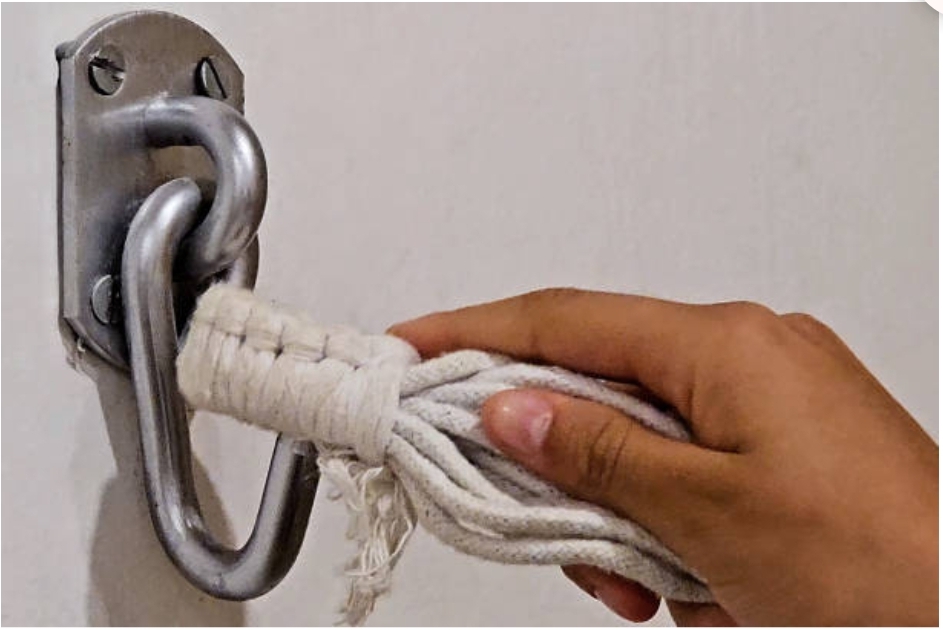It doesn’t take much skill, even for a beginner, to understand how to hang a hammock. You must always adhere to the straightforward instructions included with your hammock. Consider your weight, preferred material, and whether you’ll be using the hammock indoors or out while making your selection.
The materials used to make a hammock may deteriorate quickly when exposed to the weather, and if you don’t take precautions before hanging it, it might be dangerous.
Anthropologists estimate that the existence of hammocks dates back at least a millennium. They helped indigenous people stay off the damp ground, where snakes and vermin thrive.
It is believed that the British and Spanish fleets employed hammocks found in the Bahamas by European explorers. They were already available in America by the 1800s.
1. An Ideal Location
If you want to know how far apart your hammock supports ought to be, whether they’re trees or posts, the very first identified mass producer of hammocks, Pawleys Island Hammocks, from 1889, said that you should measure two feet longer than the hammock’s total length from the hanging points. This implies that the average hammock requires between thirteen and sixteen feet of open area.
2. Perfect Hardware for Your Hammock
Quickly and securely fasten your hammock using the included hardware, including ring buckles, finger nines, eye hooks, big S-hooks, and lengthy chains. However, the metal hardware can harm trees; to avoid this, use hammock gear with tree straps.

Image Source
3. Evaluation of Strength
It is not recommended to suspend a hammock from just any upright tree or post: The weight of the hammock might easily damage or distort the supports if they aren’t adequately reinforced. The user of the hammock is put in danger, and trees or posts are damaged as a result. Therefore, you should check the stability and longevity of the hammock’s supports before hanging it. This is one of the most essential tips to understand while learning how to hang a hammock.
4. Deciding on the Appropriate Tree
Find two robust trees spaced 10–15 feet apart. If you want your hammock to remain upright while you relax in it, you shouldn’t get a young tree. Alternatively, choose older, stronger trees that can easily handle the extra weight. Without appropriate trees, you may consider suspending the hammock from two sturdy supports.
Stay away from temporary gazebo poles and other lightweight support posts; they can easily bend and collapse when you put too much weight on them.

5. Setup Angle
Make sure that the head and neck are not positioned at an unpleasant angle when you sit in it.
You want to make sure that the hammock straps are at an angle of around 30 degrees. This should give you the ideal amount of droop and tension for a hammock, allowing you to comfortably lie down. If the angle is too sharp, you risk becoming locked in a banana-like shape, and if you try to sleep on your side, you’ll only be able to use a tiny part of your hammock.
6. Hammock Elevation
When not in use, the hammock should hang around 4 feet above the ground, and when it is in use, it should dangle approximately two feet off the ground. If that isn’t the case, you can change the height by adjusting the string, tree straps, or chain attached to the tree or support posts.
If you’d instead not use eye bolts to fasten the hammock, you may change its height by adjusting the length of the chain, ropes, or the tree straps that connect the hammock’s ends to the trees or posts that hold it up.
Image Source
7. Verify Your Safety
It is essential to verify the hammock’s weight capacity before use. Sitting gently and redistributing your body’s weight as you relax into the hammock is the secret to getting into it. You should either remove yourself from the hammock and double-check your work or choose other trees to hang from if you feel uneasy about its stability.
Stretching out the hammock while tightening the straps is a good way to test it. Depending on the results of this test, you may need to use an alternate knot on the rope to tighten the straps slightly to achieve the most comfortable hammock fit.
8. Using the Straps
In most cases, installing tree straps remains the most convenient choice. To make a slipknot that can be fastened to the hammock, just loop the tree strap over each tree and then pass it back through the loop.
If there is too much space between the trees to attach the hammock directly, you may also utilize tree straps with the hardware.
In the end!
Hanging out in a hammock is safer than dying on the carpet or grass if you know what you’re doing. Furthermore, for optimal comfort and maybe extended hammock life, hang it in a relaxing curve that is neither too low nor stiff nor requires excessive effort. The hardware on the straps and the hammock will both benefit from this.
A hammock with a spreader bar will necessitate additional room for installation. A slack curve is required to achieve the proper angle and tension on a hammock without a spreader bar. Only invest in waterproof suspension gear if you value your hammock’s longevity. The most satisfying aspect of setting up a hammock is seeing your hard-earned prize right as you finish. Indulge in some much-deserved R&R at your latest favorite spot!


 Home
Home










